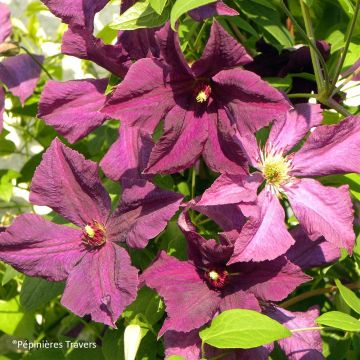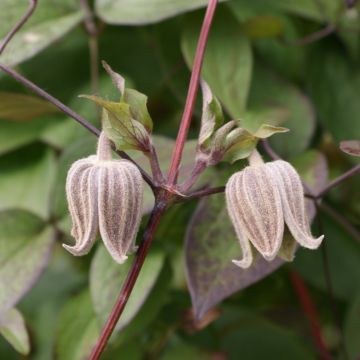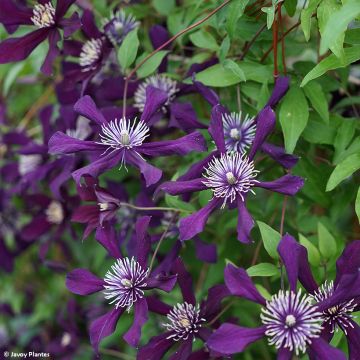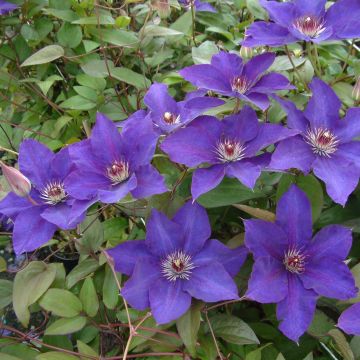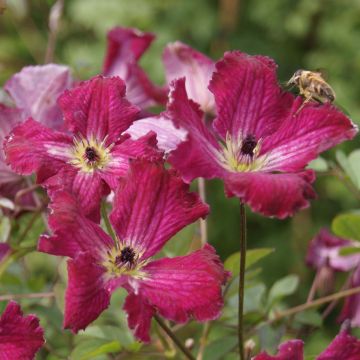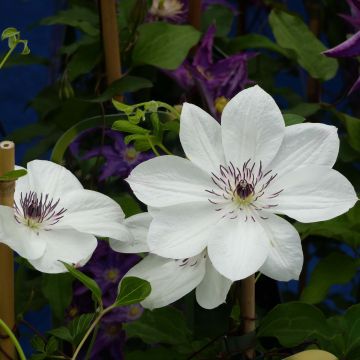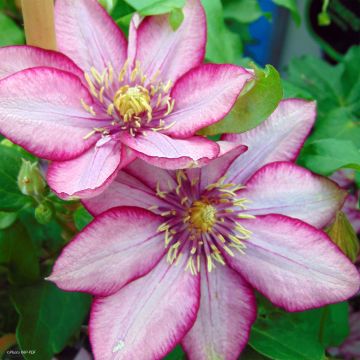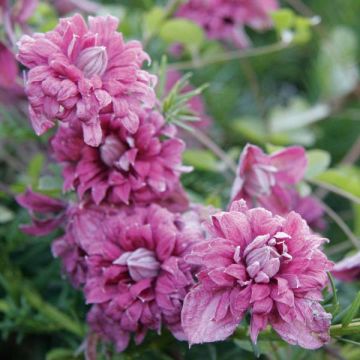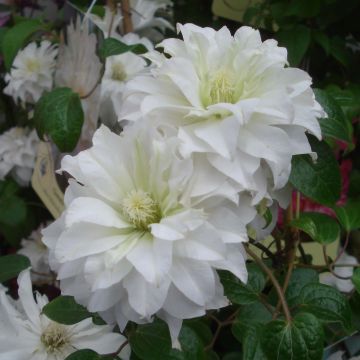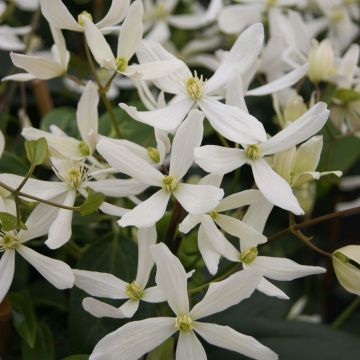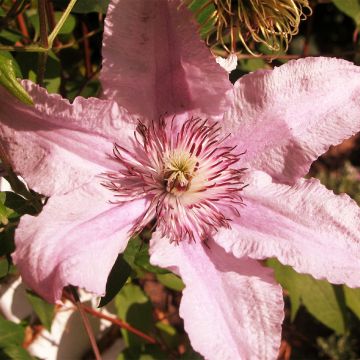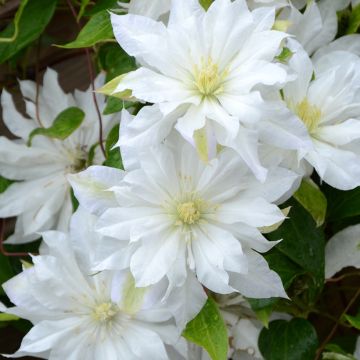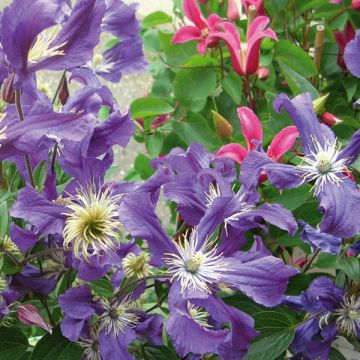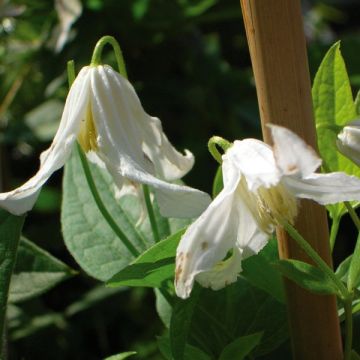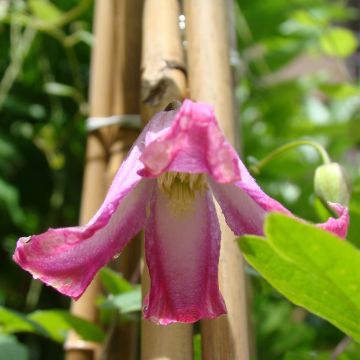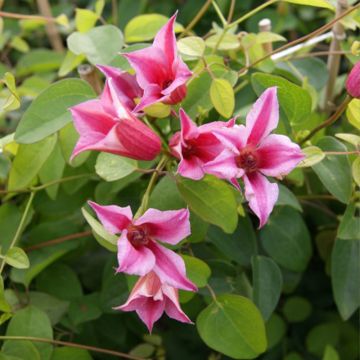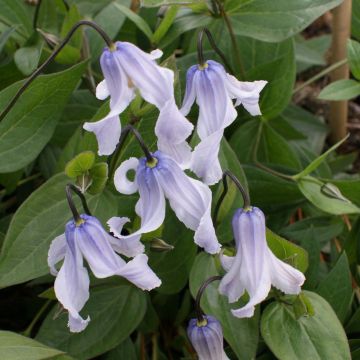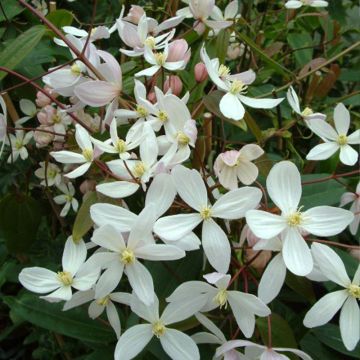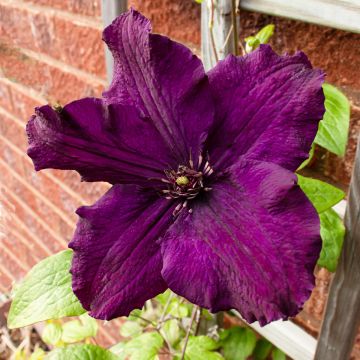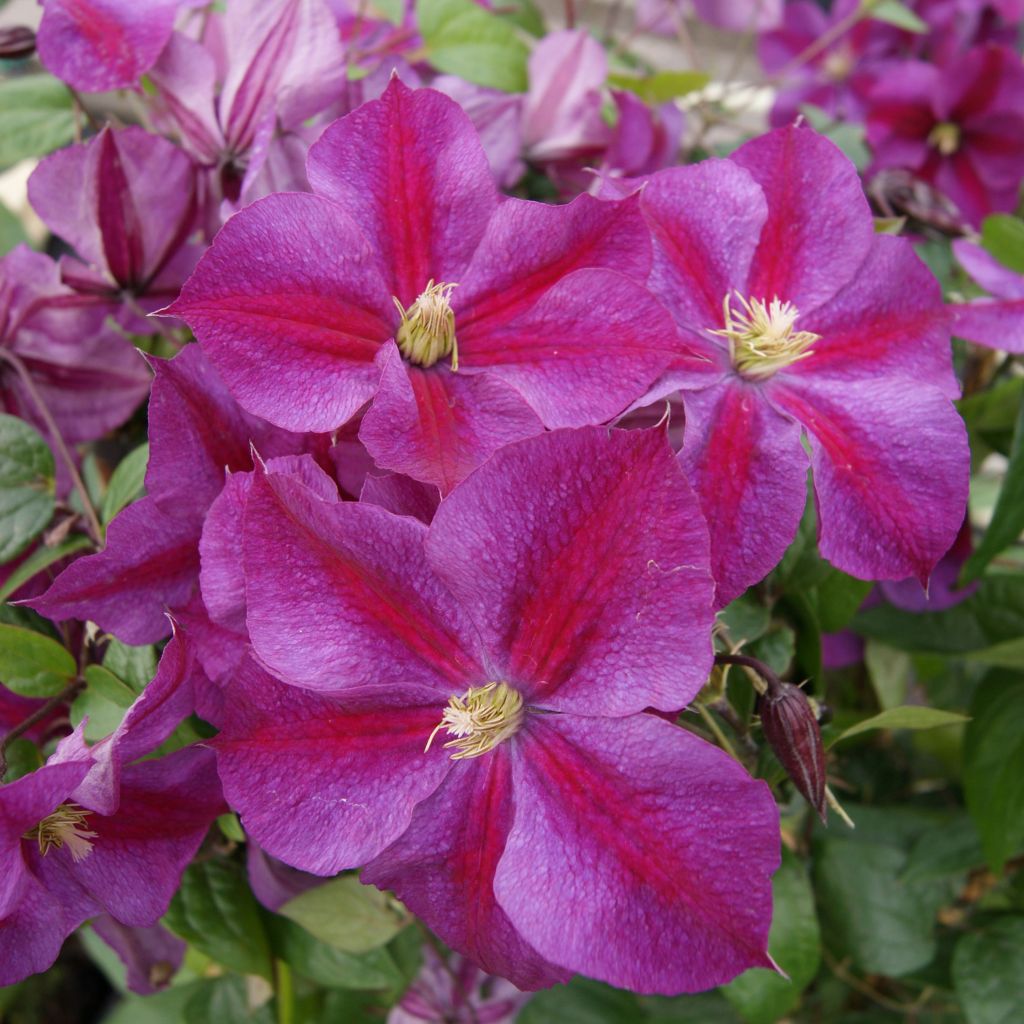

Clématite Star of Pakistan - Clematis Star of Pakistan
Clematis Star of Pakistan
Clematis Star of Pakistan
Old Man's Beard, Traveller's Joy, Virgin's Bower
This item cannot be shipped to the selected country
Delivery charge from €5.90
More information
Schedule delivery date,
and select date in basket
This plant carries a 6 months recovery warranty
More information
We guarantee the quality of our plants for a full growing cycle, and will replace at our expense any plant that fails to recover under normal climatic and planting conditions.
From €5.90 for pickup delivery and €6.90 for home delivery
Express home delivery from €8.90.
Does this plant fit my garden?
Set up your Plantfit profile →
Description
Clematis 'Star of Pakistan' is a new variety from the Netherlands, derived from the Clematis 'Star of India', which is compact and vigorous. This clematis is very floriferous, presenting beautiful single flowers with overlapping petals, in bright colours ranging from purple to violet, with a reddish-violet central stripe and a creamy yellow stamen heart, from June to September. It should be planted in partial shade, to maintain its vibrant colours.
Clematis 'Star of Pakistan', belonging to the buttercup family, is a hybrid derived from 'Star of India'. It belongs to the group of late-flowering large-flowered Clematis. Clematis attach themselves to their support through petioles transformed into tendrils. 'Star of Pakistan' is bushy and compact, with deciduous and abundant foliage. It has a rapid and remarkably vigorous growth, and can climb up to 2.5 to 3 metres (8 to 10 feet) high with a spread of about 1 to 1.5 metres (3 to 5 feet). This superb, very floriferous cultivar has magnificent large single flowers with 6 broad overlapping petals, 8 to 10 cm (3 to 4in) in diameter from June to September. Its velvety, purple to violet flowers with a reddish-violet band in the centre of the sepals, contrast beautifully with a creamy yellow stamen heart. An abundant and very bright flowering, with sublime colour harmony! It should be noted that the vivid colours of its flowers tend to fade in the sun, so a partially shaded spot is preferable.
Late-flowering large-flowered Clematis are the ultimate climbers, easy to grow and versatile. Their undeniable romanticism pairs well with climbing roses. They dress up all types of supports and, by flowering in summer, can prolong the appeal of a hedge while waiting for the colours of autumn. Trained on a tree, they will brighten up its foliage. Finally, when grown in a pot, you can admire them on the terrace or balcony. In all cases, protect them from the hottest sun. 'Star of Pakistan' will be stunning with a climbing rose, Japanese maple, laburnum, shrubby potentilla, wisteria, or butterfly bush. Medium-height perennials will shade its base, such as an epimedium, a daylily, a hellebore, a dahlia, an iris, a geum, or a crocosmia. Choose species with yellow or orange foliage or flowering for a true Pakistan atmosphere!
Report an error about the product description
Clematis Star of Pakistan in pictures
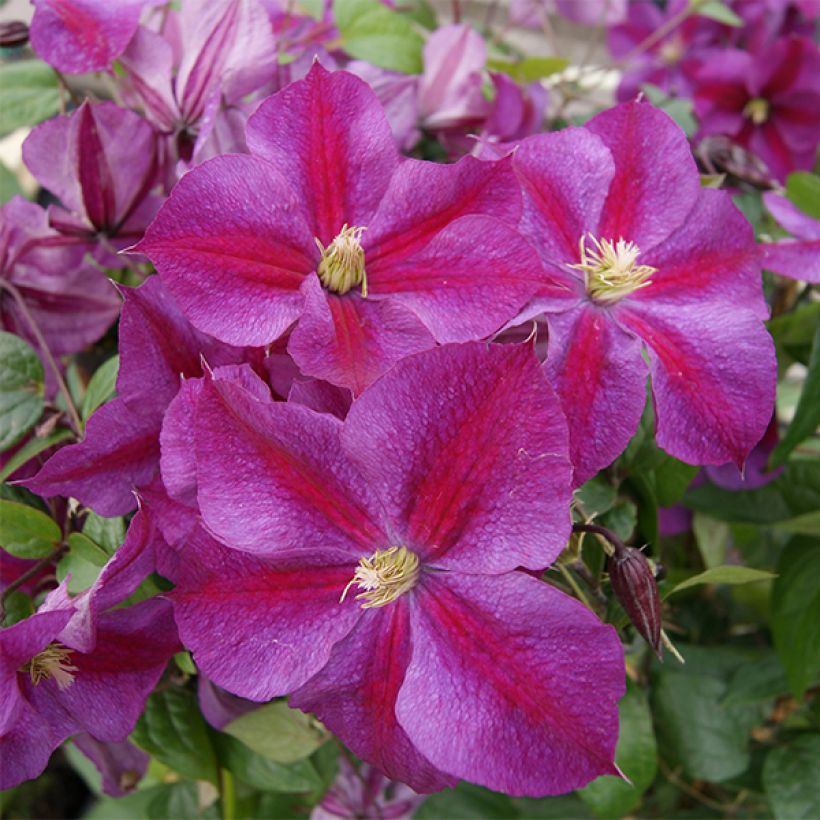

Plant habit
Flowering
Foliage
Botanical data
Clematis
Star of Pakistan
Renonculacées
Old Man's Beard, Traveller's Joy, Virgin's Bower
Cultivar or hybrid
Other Clematis Viticella
Planting and care
Clematis Star of Pakistan is a perfectly hardy and robust variety. It likes a semi-shaded exposure (so that its bright colours do not fade) and fertile, humus-rich, moist, and well-drained soil. Clematises like to rise towards the sun, with their roots in the shade. It is important that the base of its stem and its roots are in the shade. A flat tile placed at the base will provide the necessary shade. Similarly, a bushy perennial or a low-growing bush planted in front of the Clematis will also provide protection against the sun, attractively concealing the Clematis's base. Be careful when planting as Clematis roots are quite fragile. It is important to work the soil deeply and incorporate compost and a handful of bone meal or other base fertiliser that will help the Clematis establish. Water regularly, but moderately, during the first few weeks after planting to keep the soil consistently moist. The main enemy of Clematis is moisture, so the soil should never be waterlogged. Very wet soil can cause clematis wilt, often resulting in death. The Clematis should be placed in the hole in an inclined position, with the stem oriented towards the support on which it will climb. Cover with soil, forming a small mound to fully cover the base and stem of the Clematis in order to reduce the risk of wilt and promote the growth of vigorous new shoots from the crown. After planting, prune the stems of summer-flowering Clematises to 30 cm (12in) or 40 cm (16in) above a healthy pair of buds. Train the stems without crushing them until the plant clings to the support on its own with tendrils. Mulch Clematis in February with garden compost or well-decomposed manure, avoiding direct contact with the stems.
Planting period
Intended location
Care
-
, onOrder confirmed
Reply from on Promesse de fleurs
Clematis
Haven't found what you were looking for?
Hardiness is the lowest winter temperature a plant can endure without suffering serious damage or even dying. However, hardiness is affected by location (a sheltered area, such as a patio), protection (winter cover) and soil type (hardiness is improved by well-drained soil).

Photo Sharing Terms & Conditions
In order to encourage gardeners to interact and share their experiences, Promesse de fleurs offers various media enabling content to be uploaded onto its Site - in particular via the ‘Photo sharing’ module.
The User agrees to refrain from:
- Posting any content that is illegal, prejudicial, insulting, racist, inciteful to hatred, revisionist, contrary to public decency, that infringes on privacy or on the privacy rights of third parties, in particular the publicity rights of persons and goods, intellectual property rights, or the right to privacy.
- Submitting content on behalf of a third party;
- Impersonate the identity of a third party and/or publish any personal information about a third party;
In general, the User undertakes to refrain from any unethical behaviour.
All Content (in particular text, comments, files, images, photos, videos, creative works, etc.), which may be subject to property or intellectual property rights, image or other private rights, shall remain the property of the User, subject to the limited rights granted by the terms of the licence granted by Promesse de fleurs as stated below. Users are at liberty to publish or not to publish such Content on the Site, notably via the ‘Photo Sharing’ facility, and accept that this Content shall be made public and freely accessible, notably on the Internet.
Users further acknowledge, undertake to have ,and guarantee that they hold all necessary rights and permissions to publish such material on the Site, in particular with regard to the legislation in force pertaining to any privacy, property, intellectual property, image, or contractual rights, or rights of any other nature. By publishing such Content on the Site, Users acknowledge accepting full liability as publishers of the Content within the meaning of the law, and grant Promesse de fleurs, free of charge, an inclusive, worldwide licence for the said Content for the entire duration of its publication, including all reproduction, representation, up/downloading, displaying, performing, transmission, and storage rights.
Users also grant permission for their name to be linked to the Content and accept that this link may not always be made available.
By engaging in posting material, Users consent to their Content becoming automatically accessible on the Internet, in particular on other sites and/or blogs and/or web pages of the Promesse de fleurs site, including in particular social pages and the Promesse de fleurs catalogue.
Users may secure the removal of entrusted content free of charge by issuing a simple request via our contact form.
The flowering period indicated on our website applies to countries and regions located in USDA zone 8 (France, the United Kingdom, Ireland, the Netherlands, etc.)
It will vary according to where you live:
- In zones 9 to 10 (Italy, Spain, Greece, etc.), flowering will occur about 2 to 4 weeks earlier.
- In zones 6 to 7 (Germany, Poland, Slovenia, and lower mountainous regions), flowering will be delayed by 2 to 3 weeks.
- In zone 5 (Central Europe, Scandinavia), blooming will be delayed by 3 to 5 weeks.
In temperate climates, pruning of spring-flowering shrubs (forsythia, spireas, etc.) should be done just after flowering.
Pruning of summer-flowering shrubs (Indian Lilac, Perovskia, etc.) can be done in winter or spring.
In cold regions as well as with frost-sensitive plants, avoid pruning too early when severe frosts may still occur.
The planting period indicated on our website applies to countries and regions located in USDA zone 8 (France, United Kingdom, Ireland, Netherlands).
It will vary according to where you live:
- In Mediterranean zones (Marseille, Madrid, Milan, etc.), autumn and winter are the best planting periods.
- In continental zones (Strasbourg, Munich, Vienna, etc.), delay planting by 2 to 3 weeks in spring and bring it forward by 2 to 4 weeks in autumn.
- In mountainous regions (the Alps, Pyrenees, Carpathians, etc.), it is best to plant in late spring (May-June) or late summer (August-September).
The harvesting period indicated on our website applies to countries and regions in USDA zone 8 (France, England, Ireland, the Netherlands).
In colder areas (Scandinavia, Poland, Austria...) fruit and vegetable harvests are likely to be delayed by 3-4 weeks.
In warmer areas (Italy, Spain, Greece, etc.), harvesting will probably take place earlier, depending on weather conditions.
The sowing periods indicated on our website apply to countries and regions within USDA Zone 8 (France, UK, Ireland, Netherlands).
In colder areas (Scandinavia, Poland, Austria...), delay any outdoor sowing by 3-4 weeks, or sow under glass.
In warmer climes (Italy, Spain, Greece, etc.), bring outdoor sowing forward by a few weeks.

































